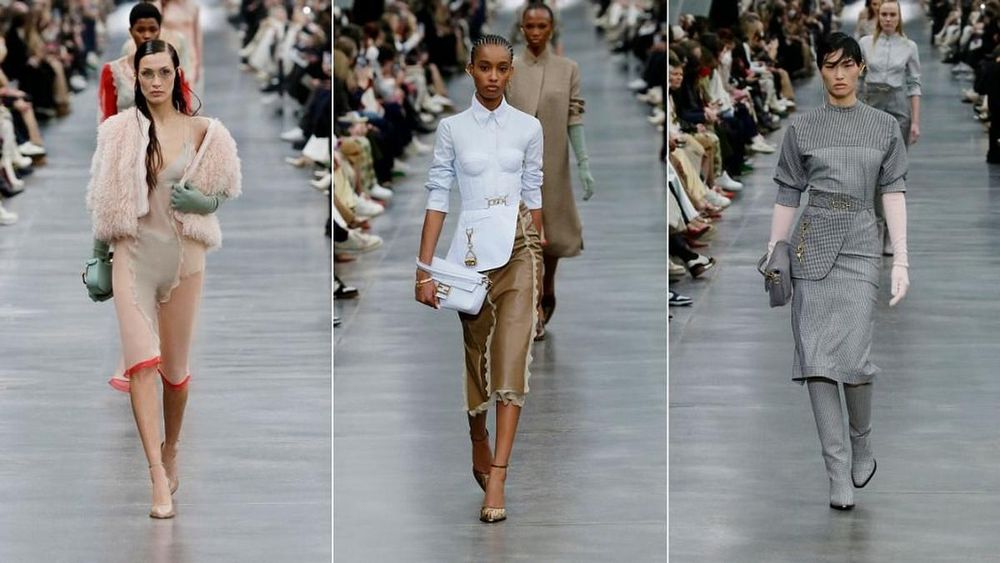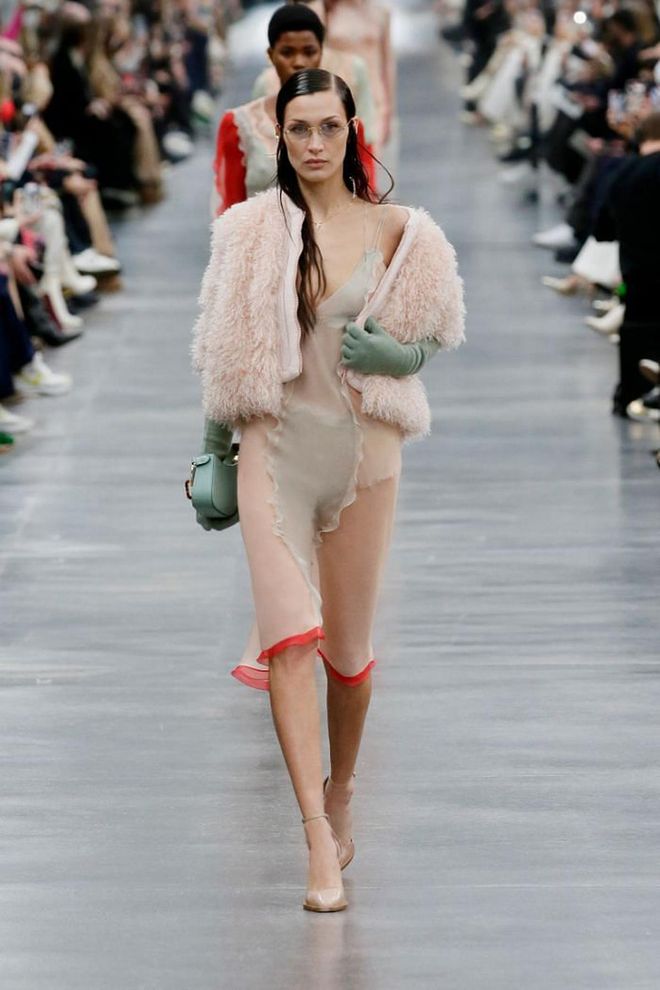Review Of Fendi Fall/Winter 2022 Collection
At Fendi, Kim Jones has a sophisticated, old-school idea about working with archival fashion.

At the Fendi show on Wednesday—the fall 2022 collection, and Kim Jones’s finest since he was appointed creative director in September 2020—the brand presented a clever new approach to the archival fashion phenomenon, reinterpreting a Memphis Group–inspired collection from the 1980s and mixing in sheer garments introduced by Karl Lagerfeld back in 2000.
Archival fashion increasingly dominates celebrity style and online fashion discourse and, with the advent of sites like Depop and The RealReal, our own wardrobes. It’s easy to see why it’s caught on. It’s sustainable—old clothes!—and, unless we’re talking about a piece of early Alexander McQueen or John Galliano or museum-grade couture by Coco Chanel herself, it’s usually more affordable than something new. And a celebrity showing up in old duds, either on the red carpet (like Kim Kardashian in McQueen’s famous Shipwreck dress) or in paparazzi photos (see: Rihanna revealing her pregnancy in ’90s Chanel), is basically the ultimate fashion flex right now.

Photo: Fendi
Fendi FW22
But for designers, it’s been a bit of a puzzle. The most straightforward way to embrace it is to just remake the pieces that everyone online is going gaga for, which brands like Jean Paul Gaultier and Raf Simons have done. But for many houses, that’s not an option, either because the creative director is no longer there to do so or because they don’t feel like it; that sort of one-to-one reproduction is no fun for the designers tasked with reinventing a house’s codes for now. Shouldn’t they focus on creating future grails? And besides, for a lot of vintage snobs, the hunt for the old and impossible-to-find thing is half the fun.
For his fall 2022 Fendi show, Jones took a different approach. Rather than wait for the market to tell him what old Fendi is hot, he landed on the vintage piece himself: Delfina Delettrez, the jewelry designer and Fendi heiress, walked into the brand’s headquarters one day in a blouse she pinched from her mother. Jones then went into the archives and studied the collection from which the shirt came, spring 1986 (designed by Jones’s predecessor Karl Lagerfeld), and reanimated its prints, colour palette, and silhouettes for now. So a Memphis Group–inspired printed dress became a sheer pantsuit; a boxy-shouldered tweedy jacket became a cropped cutaway jacket in a muted beige and green check. He shared a few side-by-sides on his Instagram that show how Lagerfeld’s old sketches, patterns, and styled-out looks inspired him; he also looked to Lagerfeld’s summer 2000 collection to inspire some sexy sheer looks at the outset of the show.

Photo: Fendi
What’s interesting about this way of making clothes is that it grounds them while allowing Jones to maintain a conservative perspective. Although he’s the man behind the legendary 2017 collaboration between Louis Vuitton and Supreme, has worked with Kim Kardashian to make Fendi-branded SKIMS, and unleashed the out-there Fendace stunt that combined Fendi and Versace on the world, Jones is an old-school designer. He produces clothes with a prolific smoothness (he is also the creative director of Dior Men’s). He loves first-name-basis models: Bella (who opened the show), Naomi, Kate. (The latter two were absent, presumably because they were attending Vogue editor Edward Enninful’s wedding.)
Jones pulls all the levers we associate with luxury: a beige colour palette, trumped-up design (like boned bustiers layered over crisp button-ups and a belted blazer panel that turned shorts into skorts and created a one-sided peplum over trousers), fur, glamour. It looks expensive, which not much else does these days. And actually, designers have always gone back into the archives. He’s following a long precedent, whether it’s each new Dior creative director interpreting Christian Dior’s Bar Jacket or Karl Lagerfeld churning out tweed skirt suits at Chanel. Jones just knows how to put it on the right models and sell the material backstory on Instagram.
In the past, the hugeness required by the scale of the brand has made Jones’s clothes feel a bit too corporate, too polished. (Who in the world looks this perfect?!) But if the anecdote about Delettrez is almost trite—the heiress as muse is, let’s face it, a cliché arrangement—the archival journey offered a foundation of narrative and feminine intimacy that made this collection feel more human, reminding us there are people behind these clothes. And he gets to speak to the Internet’s brigade of self-taught archivists, giving them just the kind of trick they love to see.

Photo: Fendi
Fendi FW22
In fact, by dipping back into his own brand’s archive, Jones is sort of beating the fashion flex du jour at its own game—showing Bella Hadid in archival Fendi redesigned for now, during a moment when stylists obsessively hunt down archival clothes in which to dress their celebrity clients. (Putting her in nerdy oval glasses of the kind that filled your local 2001-era LensCrafters was a humanizing styling choice too.)
Yet the clothes themselves felt blithely un-Internet, even non-digital: beige, peach, diaphanous, creamy, orderly, meticulous, perfectly crafted. “It’s a wardrobe designed for every aspect of a woman’s life, for every generation,” Jones said in his notes.
In particular, the sheer pieces, layered over triangular bra tops and briefs, had a femininity that felt contemporary, of the kind that men designing for women rarely tap into. There’s a funny thing sorting itself out about sexy dressing right now: Are designers showing revealing clothes because they sense women feel a renewed sense of wild post-pandemic vanity, or are we instead more comfortable with our physical selves, having spent the past two years caring for them with unprecedented tenderness?
Jones’s see-through numbers were sexy, I guess, as anything that shows off your underpinnings has to be, but their fluttering softness looked intimate and secretive, emanating the same feeling as gossip or mother-daughter heirlooms. (Just as that blouse intended!) Although the clothes, Jones said, “come from the past, [they] feel very now.” That’s the sort of line any designer would love to say about their clothes, but for Jones, this really felt true.
This article originally appeared in Harper's BAZAAR US